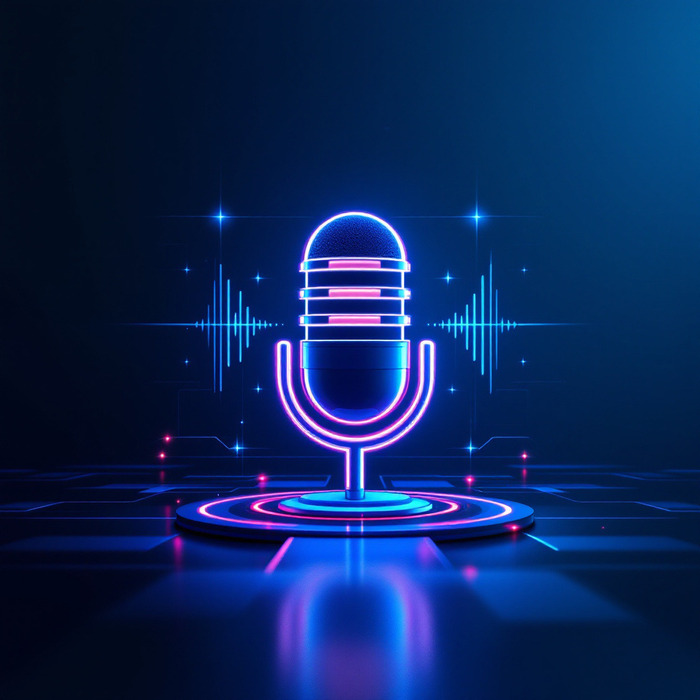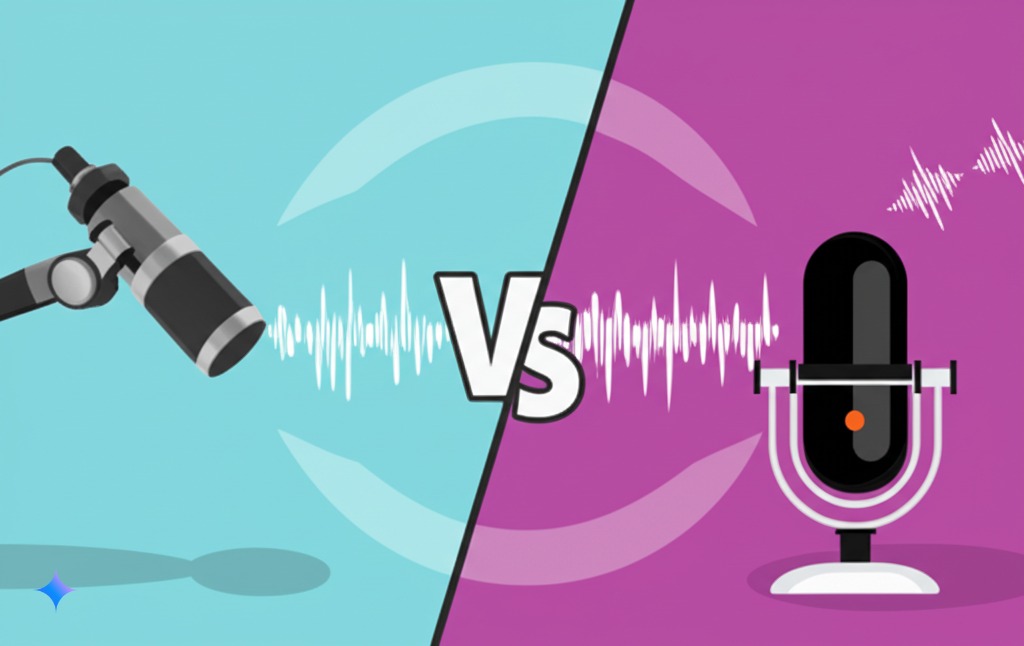
Discover how AI voice generators for radio are transforming commercial production—from script to broadcast. Explore top AI voice tools and how advertisers are using them to create professional spots in minutes.
Introduction
The Rise of AI in Audio Production
AI voice technology and radio are teaming up in some pretty cool ways these days. What used to be just a dream – computers that can speak scripts, create natural-sounding voices, and produce polished commercials – is now something advertisers use all the time.
Back in the early 2000s, some tech companies started playing around with making computers read text aloud. Nothing fancy, but it was a start. By the 2010s, the technology got better and could generate speech that sounded somewhat natural, though still obviously computerized.
Now look where we are! AI voice generators have become just another tool in many radio producers’ kits. Whether you’re creating ads for a small local station or producing spots for national brands, these technologies are changing how radio commercials get made from script to broadcast.
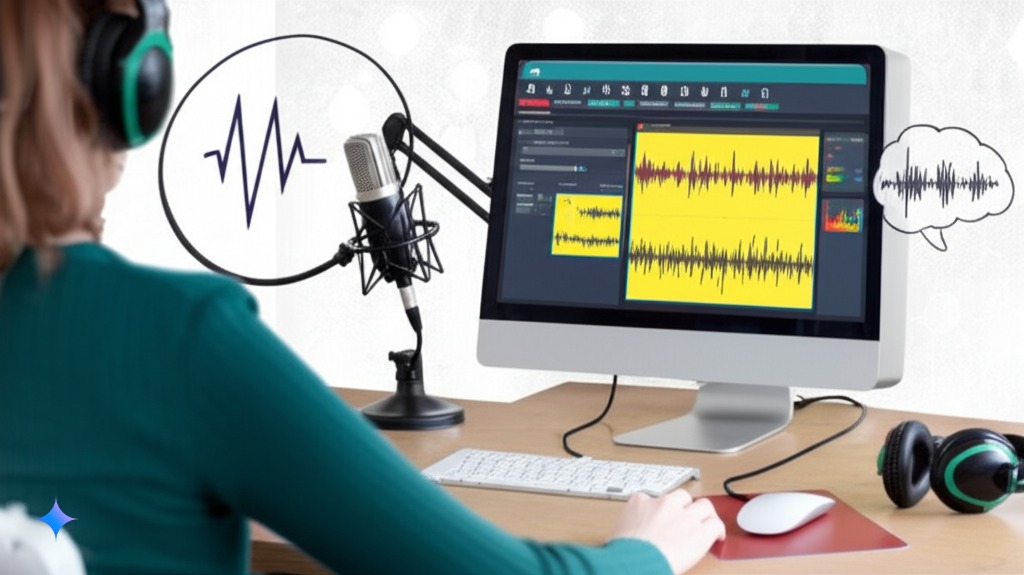
Importance of AI Voice Generators
The best part? You don’t need a technical background to use this stuff anymore. Lots of powerful AI-generated voice content comes from user-friendly platforms that anyone can figure out with a little practice.
This whole shift brings up some interesting questions about audio production. When an AI creates a voiceover that connects with listeners, how does that change the creative process? Most producers find that AI works best as a helper rather than doing everything itself – it adds to their creative options instead of taking over.
In this guide, we’ll check out how these AI voice tools work through the whole radio commercial production process – from writing the script to getting that final polished ad ready for broadcast. Whether you create radio spots, manage advertising, or just wonder how computers can help make compelling audio, this look at AI-powered voice production shows where things are headed in this fast-changing industry.
What Are AI Voice Generators?
Definition and Functionality
So what exactly are AI voice generators and how do they actually work? At their core, they’re programs that turn written words into spoken ones. But they’re a whole lot more sophisticated than those robotic voices from early GPS systems.
These systems learn how real people talk by studying tons of recorded human speech. They pick up on all the little details – how we pause between phrases, raise our pitch when asking questions, or emphasize certain words to make a point. The good ones even throw in those subtle mouth sounds and breaths that make speech sound genuine.
Think of it like this: you type your radio script, pick a voice style that matches your brand, tweak a few settings if you want, and hit generate. A minute later, you’ve got a voiceover that sounds surprisingly human – no studio booking or voice actor required.
Types of AI Voice Generators
Not all AI voice technology is created equal. There are basically two main types you’ll come across:
First, there are the basic text-to-speech programs. They’ve been around for years and work by following simple pronunciation rules. They’re okay for internal use or maybe for generating voice prompts for a phone system, but they sound pretty robotic. You definitely wouldn’t want them reading your radio commercials.
Then there are the newer, advanced AI-powered voice generators. These use fancy tech called neural networks that can mimic human speech patterns amazingly well. Some can even maintain a consistent voice personality throughout a long script and adjust their tone to match the emotion of what they’re saying.
For radio commercial production, you’ll want to stick with the second type. The difference in quality is night and day, and radio listeners can spot a robotic voice from a mile away.
Benefits of Using AI Voice Generators for Radio Commercials
Cost and Time Efficiency
Let’s talk about the practical stuff – money and time. Traditional radio ad production isn’t cheap. You’ve got to pay for studio time (easily $100+ per hour), hire voice talent ($250-$500 for a basic commercial), and often wait days or even weeks to get it all scheduled and completed.
AI voice generators for radio flip this whole process on its head. Most platforms charge between $15-50 to generate a commercial-length voiceover, and you get it in minutes, not days. Some work on subscription models where you can create multiple spots for a flat monthly fee.
This changes the game completely for small businesses. The local pizza place that could never afford radio ads before? Now they can run campaigns without breaking the bank. And bigger companies can create way more content with the same budget.
Creative Flexibility
Here’s where things get really interesting for creatives. With traditional voiceover recording, making changes is a pain. The client wants to tweak a few words? That means booking more studio time, getting the voice actor back in, and paying for all of it.
With AI for radio ads, you just edit your script, hit regenerate, and boom – new version ready to go. This completely changes how you can approach the creative process.
I was talking with a friend who produces ads for a car dealership chain. They used to create one generic ad that ran across all their locations. Now with AI voices, they customize each spot with the local dealership address, specific inventory, and even references to local landmarks – all without additional recording costs. The ads perform better because they’re more relevant to each market.
Wide Range of Voice Options
The variety of voices available with good AI voice generators is pretty mind-blowing. Most platforms offer:
- Dozens of different voice personalities
- Multiple languages and accents
- Different age ranges
- Various emotional tones
This variety lets you find voices that actually match your brand vibe or target audience. Need a voice that sounds like a friendly next-door neighbor for your community bank? Or a high-energy announcer type for your sporting goods sale? You can find them all in the same platform and even test different options to see which one lands better with your audience.
For businesses that run ads in different regions, this is super handy. You can keep the same script but switch to a voice with a regional accent that connects better with locals in each market.
How to Choose the Best AI Voice Generator for Radio Production
Voice Quality and Naturalness
When you’re picking an AI voice solution for radio commercials, this is the big one. The voice absolutely has to sound natural enough that listeners don’t get distracted thinking about whether it’s real or not.
Here’s what to listen for when testing different platforms:
- Do the sentences flow naturally with the right rhythm and pauses?
- Does the voice put emphasis on the correct words?
- Does it handle questions and exclamations in a way that sounds right?
- Can it express different emotions when needed?
Try running a sample of your actual ad copy through different systems and listen with a critical ear. Pay special attention to how they handle industry terms or unusual product names you might mention in your ads.

Customization Options
Good voice generating technology shouldn’t just give you a take-it-or-leave-it result. You need to be able to tweak things to get exactly the sound you want. Look for platforms that let you adjust:
- How fast or slow the voice speaks
- The pitch and tone
- Where the voice places emphasis
- Pauses between phrases
- Overall emotional delivery
These controls help you fine-tune the voice to match your brand personality and the feel you want your commercial to have. When I tested different platforms, I found some gave much more granular control than others – and that control really matters when you’re trying to get that perfect delivery.
Licensing and Commercial Rights
This is the part nobody likes to think about, but it’s super important. Before using any AI voice generator for commercial purposes, especially broadcast, you need to understand the licensing terms.
Some important questions to get answered:
- Does the platform explicitly allow use in broadcast commercials?
- Is there a different price tier for commercial usage?
- Are there limits on how many times the ad can be aired?
- Do you fully own the rights to the generated audio?
I’ve heard horror stories about businesses that created great ads with AI voices only to get cease-and-desist letters because they didn’t have broadcast rights. Don’t let that happen to you. Read the terms of service or contact the company directly if anything is unclear.
Top AI Voice Generators for Radio Commercials
1. ElevenLabs
ElevenLabs is making some serious waves with their incredibly natural-sounding AI voice content. Their technology captures those tiny human speech details – like subtle breaths and slight variations in timing – that make voices sound real.
Key features for radio production:
- Super realistic voices that sound genuinely human
- Voice cloning capabilities (with proper permissions)
- Great control over emotion and emphasis
- Professional handling of industry terms and names
If you want to create AI narration for radio commercials that sounds authentic and engages listeners emotionally, ElevenLabs is hard to beat. Their premium voices are especially good for spots that need to build trust or emotional connection.
2. Descript
Descript takes a different approach – it’s actually a full audio production studio with powerful AI voice features built right in. This makes it super handy for creating complete radio commercials, not just the voiceover part.
Key features for radio production:
- Edit text and audio in the same interface
- Automatically removes filler words and awkward pauses
- Easy mixing of voice with music and sound effects
- Simple workflow for creating multiple versions
If you need to edit AI voice recordings after generating them, Descript makes it ridiculously easy. You can literally edit the words like a text document, and the audio updates automatically – perfect for when clients request last-minute changes.
3. Murf AI
Murf AI has become popular with radio producers who need a wide range of different voice styles. They’ve got a huge voice library with options that work for pretty much any type of business or campaign.
Key features for radio production:
- Tons of voice options across different styles and demographics
- Good emotion controls for emphasizing key points
- Team collaboration tools for getting feedback
- Commercial rights included in business plans
For agencies handling voice generation for different clients, Murf’s variety makes it a solid choice. You can find voices that match the personality of everything from a luxury car dealership to a local family restaurant.
4. Play.ht
Play.ht really shines when it comes to creating ads in multiple languages. If you’re producing spots for diverse markets, their multilingual capabilities can save you a ton of time and money.
Key features for radio production:
- Over 900 voices in 142+ languages
- Voice cloning capabilities
- Commercial usage rights available
- API for integrating with other production tools
For stations serving multilingual voice content, Play.ht makes it simple to create consistent messaging across language barriers without hiring multiple voice actors.
Best Practices for Creating High-Impact Radio Ads with AI Voices
Keep It Concise
Radio ads need to get to the point quickly. People are often doing something else while listening – driving, working, cooking – so your message needs to be clear and concise. When using AI voice generators for radio, remember:
- Standard radio spots run 30 or 60 seconds
- A 30-second spot fits about 80-90 words
- Use simple, straightforward language
- Front-load the important stuff
One cool thing about AI voices is you can adjust the speaking rate to fit your time slot perfectly. Just don’t crank up the speed too much – listeners need time to absorb what they’re hearing, especially important details like phone numbers or addresses.
Add Emotional Depth
Modern AI voice technology can express emotion pretty convincingly, but you need to know how to use this feature effectively:
- Match the emotional tone to what you’re selling
- Use excitement for limited-time offers and sales
- Go with a friendly, conversational approach for brand-building
- Choose authoritative voices for messages about serious topics
You can dramatically improve your ads by using AI celebrity voices for commercial spots (legally cleared ones, of course). Voices that sound like recognizable personalities can grab attention and add credibility – just make sure you’re using properly licensed voices.
Test Different Variations
This is where AI-generated voice content really shines compared to traditional production. Since generating new versions is so cheap and easy, you can actually test different approaches to see what works best.
Try creating:
- Different script versions highlighting various benefits
- The same script with different voice types
- Variations with different background music
- Versions with different calls to action

Many radio stations can provide basic performance metrics, or you can use unique phone numbers or promo codes in each version to track response rates. This kind of testing used to be a luxury only big brands could afford – now any business can do it.
Challenges and Limitations of AI Voice Generators
Lack of True Human Emotion
Let’s be honest – while AI voice technology has gotten amazingly good, it still has limitations. Very subtle emotional nuances or certain types of delivery (like sarcasm or gentle humor) can still be challenging for AI to nail perfectly.
For straightforward promotional ads, this usually isn’t a problem. But if your commercial concept relies on very specific emotional delivery or comedic timing, you might still want to consider a human voice actor for those particular projects.
Pronunciation Issues
One common hiccup with AI voices is pronouncing unusual words correctly. This can include:
- Brand names with unique spellings
- Industry jargon or technical terms
- Local place names and landmarks
- Product names with non-standard pronunciation
Most good platforms have ways to guide pronunciation using phonetic spelling or other tools. Take the time to check and correct these issues before finalizing your ad – mispronouncing your brand name or key product can really undermine your credibility.
Legal and Ethical Considerations
The AI voice generators world is still relatively new, and the legal landscape is evolving. Some important considerations:
- Make sure you have explicit commercial broadcast rights
- Don’t create voices that mimic specific celebrities without permission
- Be aware of potential disclosure requirements in some jurisdictions
- Stay updated on industry standards and regulations
Taking a thoughtful approach now can save you headaches down the road, especially as regulations catch up with the technology.
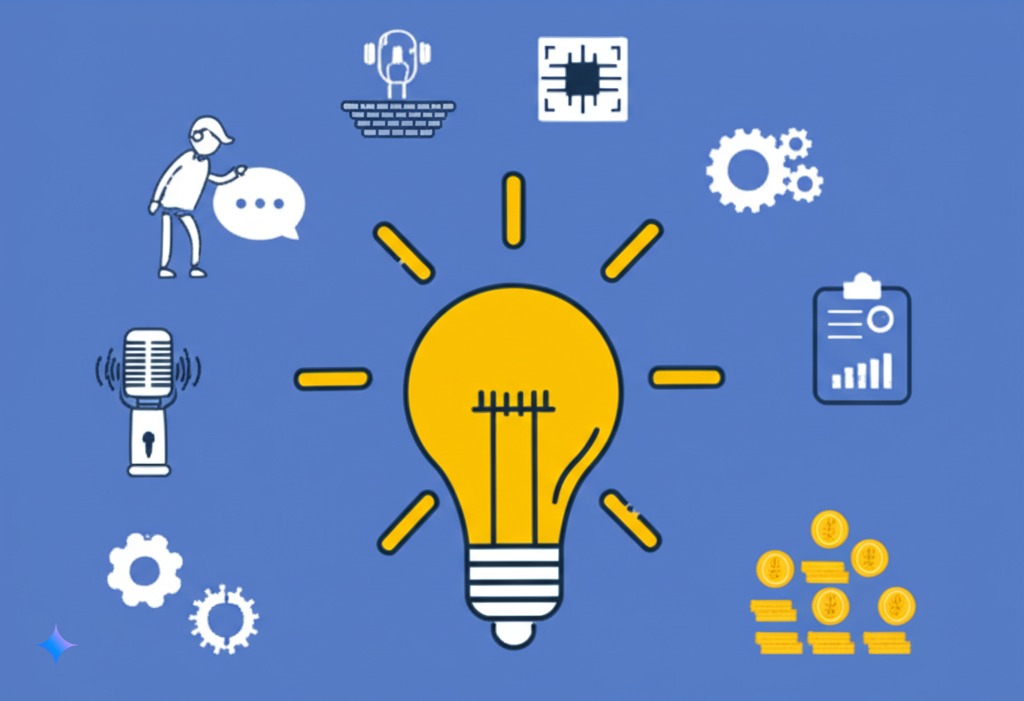
Conclusion
Summary of Benefits
AI voice generators for radio have fundamentally changed what’s possible in commercial production. The benefits are pretty compelling:
- Drastically lower production costs compared to traditional methods
- Lightning-fast turnaround times
- Incredible flexibility for testing and updating content
- Access to a wide variety of voice styles and languages
- Consistent quality across all your advertising
For stations, agencies, and business owners, this technology opens up new creative possibilities while reducing barriers to entry for radio advertising.
Future of AI in Audio
We’re really just getting started with what AI voice technology can do for radio. Looking ahead, we’re likely to see:
- Even more natural-sounding voices with greater emotional range
- Better understanding of context and nuance
- More sophisticated voice customization options
- Seamless integration with music and sound effect generation
As the technology gets better, the conversation will shift from “Does this sound real enough?” to “Which voice best communicates our message and connects with our audience?” That’s when things get really interesting from a creative standpoint.
Whether you’re already using AI voices or just starting to explore the possibilities, the technology is only going to get better from here. The radio producers who master these tools now will have a serious competitive advantage as voice AI continues to transform the industry.
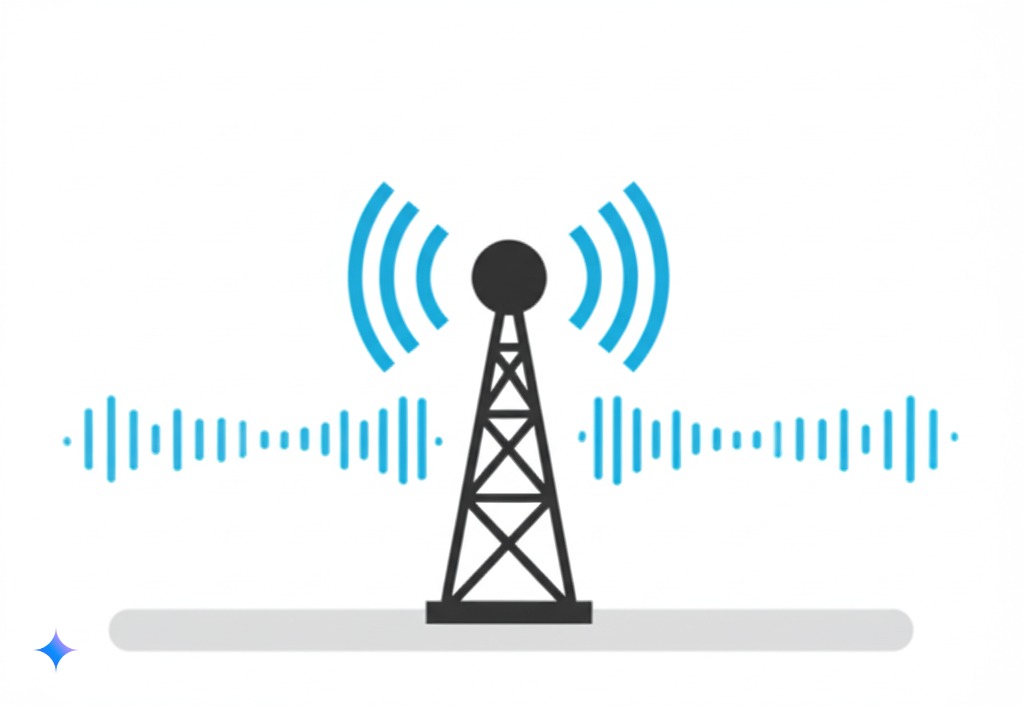
FAQs about AI Voice Generators for Radio Commercial Production
What is an AI voice generator?
An AI voice generator uses artificial intelligence to turn text into natural-sounding speech. Unlike the robotic voices from a few years ago, today’s AI voices sound remarkably human, with proper pacing, emphasis, and even emotional expression.
How much do AI voice generators cost for radio commercial use?
The price range is pretty wide. Basic subscriptions start around $15-30 monthly, while more advanced options with broadcast rights might run $50-100 monthly or more. Some platforms charge per word or per minute of generated audio. Shop around – the most expensive isn’t always the best for your specific needs.
Can listeners tell the difference between AI and human voices?
With top-quality AI voice generators, most casual listeners can’t tell the difference in a typical radio commercial context. The technology has improved dramatically in the last few years. That said, very discerning ears might still notice subtle differences in the most nuanced emotional delivery.
What are the main benefits of using AI voices for radio commercials?
The big advantages are cost savings (often 70-90% less than traditional production), speed (minutes instead of days), flexibility to make changes easily, access to many different voice styles without hiring multiple actors, and the ability to test different versions without breaking the bank.
How do I ensure my AI-generated radio commercial sounds natural?
Choose a high-quality AI voice platform, write scripts in a conversational way (how people actually talk), use punctuation strategically to guide delivery, test different voices to find the right match for your message, and use the customization tools to adjust things like pace and emphasis until it sounds just right.
Sources:

